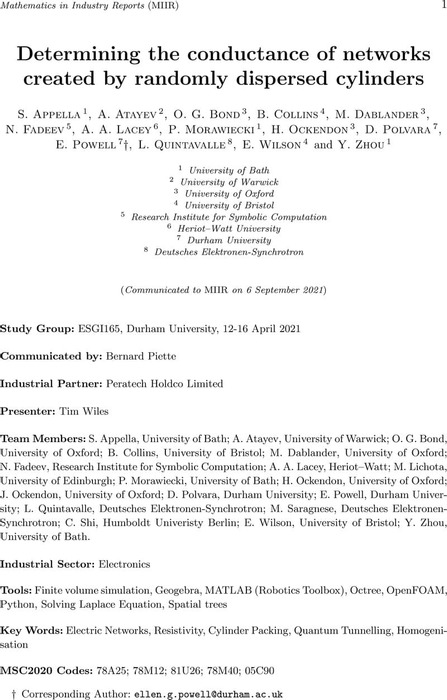Abstract
This report investigates various aspects of modelling a composite material using randomly packed cylinders in 3d space. In particular it considers: simulating configurations of non-intersecting cylinders; generating weighted networks from such simulations, including calculation of minimal cylinder separation distances; estimating the conductance or resistivity of such a network. This is based on work carried out during the ESGI165 Study Group at Durham University, April 2021.
Acknowledgement: This project has received funding from the European Union’s Horizon 2020 research and innovation programme under the Marie Skłodowska-Curie grant agreement No. 764850 (SAGEX). This is paper SAGEX-21-25.
Content



![Author ORCID: We display the ORCID iD icon alongside authors names on our website to acknowledge that the ORCiD has been authenticated when entered by the user. To view the users ORCiD record click the icon. [opens in a new tab]](https://www.cambridge.org/engage/assets/public/miir/logo/orcid.png)